
A child shows off her new prosthetic arm from Limbitless. Image courtesy of University of Central Florida Research Foundation, Inc. and Autodesk.
Latest in Prototype Manufacture
Prototype Manufacture Resources
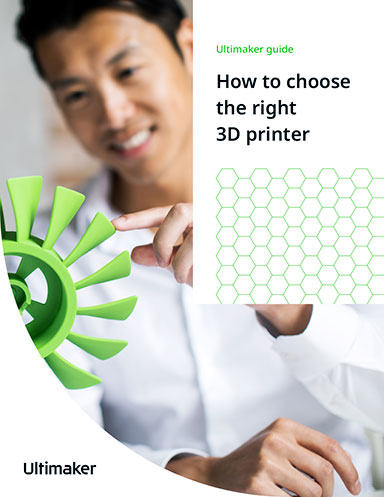
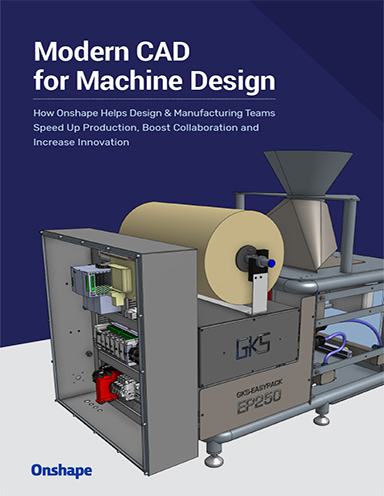
Autodesk

Dassault Systemes

Latest News
January 28, 2022
Many people may view a wheelchair or a missing limb as a disadvantage, but some engineers see endless possibilities. For them, the anomaly is a chance to rethink form and function, perhaps to invent something superior to what is missing.
At the nonprofit Magic Wheelchair, volunteers contribute their ingenuity and physical labor to transform wheelchairs into unicorns, hot rods and starships and bring children’s fantasies to life.
At Limbitless, also a nonprofit, designers build custom bionic arms infused with technology and character equipped with electronics and decorated with floral patterns. These are just two examples of social enterprises that combine technology and creativity to change lives for the better.
A Movable Castle
Ten-year-old Freyja Christian uses a wheelchair to get around. She also uses her imagination to travel with the help of fairy tales. In her letter to the Magic Wheelchair, she specifically requested “a princess castle or a carriage ... flying mermaids, cats and dragonflies.”
For Freyja, the wheelchair brings independence. For Annie Cheung, senior manager, Product Definition, SolidWorks, the Magic Wheelchair is a vehicle for creativity. She and a team of volunteers at SolidWorks have worked on previous projects for the organization. Freyja’s wheelchair would become the team’s third build.
Previous collaboration between SolidWorks user community members and Magic Wheelchair resulted in, among others, a movable throne, inspired by the “Be Our Guest” song from “Beauty and the Beast;” and a “Star Wars”-themed wheelchair, inspired by “The Mandalorian” TV series.
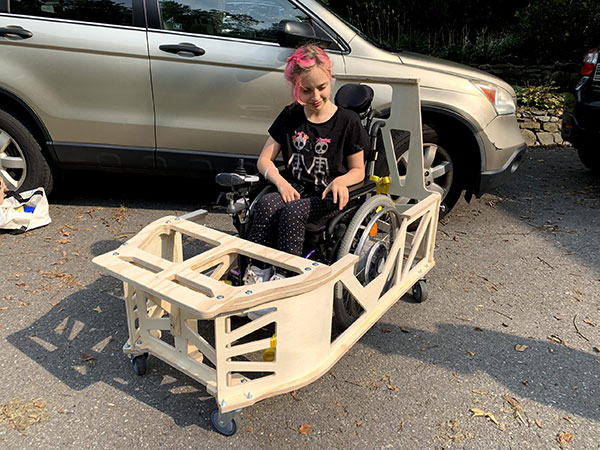
Freyja sits in the frame that will eventually become the base for her moving castle. Image courtesy of SolidWorks and Magic Wheelchair.
In the middle of the pandemic, the team began to design Freyja’s set piece. The team used 3DSwym, a social media-style collaboration platform by Dassault Systèmes.
“We were extremely cautious to reduce the team to only the essentials,” says Chinloo Lama, director of UX in communication, collaboration and visualization, SolidWorks.
“The 3DSwym community allowed us to share ideas, picture, videos and diaries of prototypes and build process. The dashboard gave us a home base to access critical information about Freyja’s likes and personality. We drew inspiration from the content,” she adds.
The primary 3D modeling was done in SolidWorks CAD. “We used SolidWorks CAD to generate the G-code that was needed for machining the different pieces. A lot of the elements for the costume came to life because we had the G-code,” Cheung says.
3D-Printed Fairies and Beasts
For the army of winged fairies and dragonflies on the wheelchair, the team 3D-printed them and magnetically mounted them with embedded radiofrequency identification tags and lights to turn them on and off as desired.
“We needed to use SLA [stereolithography] printing, which can capture a lot of the [design’s] smaller details,” Cheung says.
The dragonflies were modeled from scratch in xShape, a 3D sculpting program.
“You basically start with a digital piece of clay, then push and pull it,” says Jordan Tadic, senior solution consultant, SolidWorks.
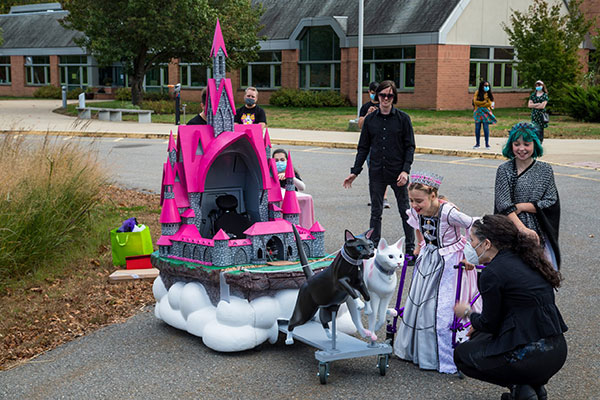
Perhaps the most prominent features of Freyja’s carriage are two giant cats that draw the wheelchair. Each about one-third the size of Freyja herself, they were modeled in xShape by Rob Jost, senior manager, Product Definition, SolidWorks.
“The subdivision command really helped me, especially around the eyes,” he says.
The creatures were much too big to fit into a 3D printer’s typical print chamber, so they were printed as separate pieces.
“I counted them. There were 53 different body parts for the cats,” Jost says.
The team used 3DPlay, a 3D model-based collaboration app in the 3DEXPERIENCE portfolio. “It was extremely helpful to see the cats as [they] progressed in 3D to provide input on the look, poses and scale,” says Lama.
The castle-carriage was unveiled to Freyja and her family during her 10th birthday party. She named her carriage-drawing cats Annie and Christine.
A Canvas for Self-Expression
Albert Manero, co-founder and president of Limbitless Solutions, is also director of the Office of Research Operations at the University of Central Florida.
“I was stuck in traffic, listening to the radio and they had an interview with a gentleman who built the first 3D-printed mechanical hands. I came into my research lab and I said to everyone in my lab: ‘I have to be a part of this,’” he says, explaining the genesis of his seven-year-old nonprofit.
His goal is to raise enough funds to donate 100 bionic arms (estimated at $1,000 per piece) and support 100 Bionic Kids (at $10,000 per person) in future clinical trials. He has delivered bionic arms to 36 kids.
Manero sees the arm as “a canvas for personalized expression.” The personalization begins online through its web-based customizing interface. Here, the patient picks from four templates (Warrior, Ethereal, Shadow or Serenity), then specifies the color schemes, from base plates to borders. He managed to convince video game makers to become partners, so the design (for adult arms) can also include elements from “Halo,” “League of Legends,” “Assassin’s Creed” and “Cyberpunk 2077.”
“Each participant may design at least two sleeves, which are interchangeable on a magnetic locking system for easy one-handed attachment. As we have the designs already made in a 3D modeling system, we are able to do some minor conversions and upload through our portal,” says Manero.
Pandemic-Prompted Supply Chain Challenges
Limbitless uses Autodesk Maya, Fusion 360 and Blender in its design process, augmented with some Adobe software. “Maya really excels at character development, so Limbitless was using it to create digital assets, for the really organic forms on the sleeves,” says Jared Vanscoder, customer engagement program manager, Autodesk.
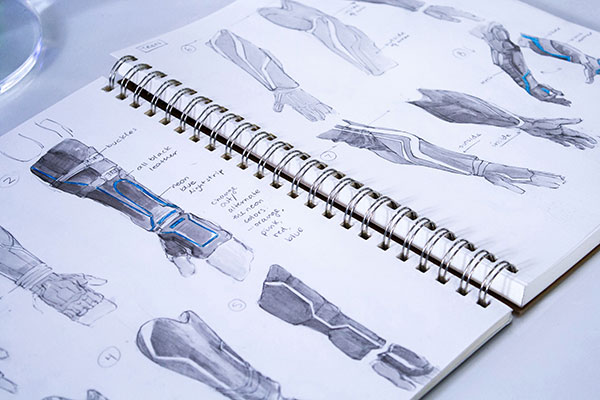
Seven years ago, Autodesk Fusion 360 was still in its infancy, but Maya was part of many university engineering and design programs; therefore, students with some experience in Maya would not be difficult to find.
“Now, all the mechanical parts are designed in Fusion 360, our manufacturing platform. They’re also using it for ECAD and plastic simulation through Moldflow,” Vanscoder says.
With the pandemic preventing physical contact with potential arm recipients, Limbitless had to find ways to adapt.
“Working quickly with our hospital partners and our university we shifted the study visit to an all-virtual component,” Manero says. “The human integration components of the arm use a photogrammetry method we developed that leverages Fusion 360. Currently, with supply chain challenges, the raw materials for the prosthetic have been affected and we continue to innovate on the design and procurement.”
Limbitless also provides a mobile app to its bionic arm recipients.
“The training games interface uses a special Bluetooth electromyography controller that we provide the participants, though you can also play by tapping the screen. For character and environment design, we heavily used Maya before going into Unity,” says Manero.
“Limbitless’s mission fully aligns with Autodesk’s—to make a better world, to design a better world. They are doing it with our tools,” says Vanscoder.
More Autodesk Coverage
More Dassault Systemes Coverage

Subscribe to our FREE magazine, FREE email newsletters or both!
Latest News
About the Author
Kenneth Wong is Digital Engineering’s resident blogger and senior editor. Email him at kennethwong@digitaleng.news or share your thoughts on this article at digitaleng.news/facebook.
Follow DE



